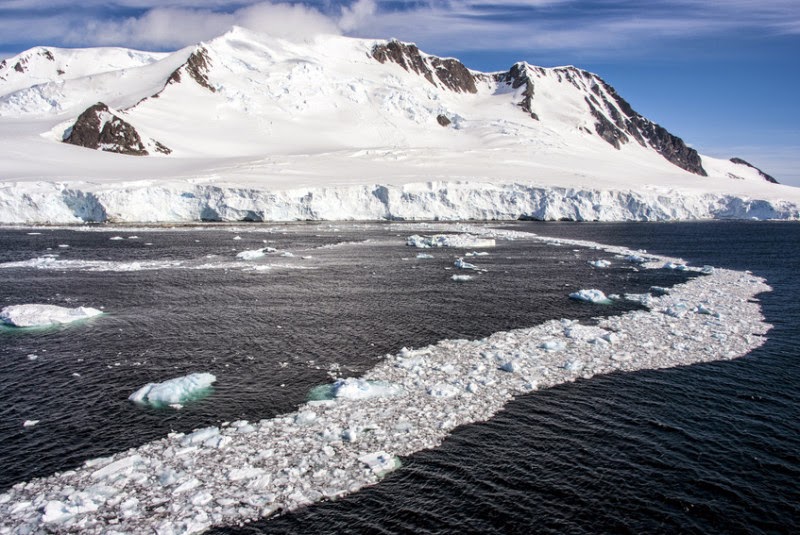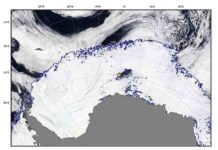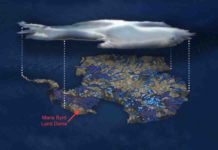
Climate modelers from the University of New Hampshire have shown that the most likely explanation for the initiation of Antarctic glaciation during a major climate shift 34 million years ago was decreased carbon dioxide (CO2) levels. The finding counters a 40-year-old theory suggesting massive rearrangements of Earth’s continents caused global cooling and the abrupt formation of the Antarctic ice sheet. It will provide scientists insight into the climate change implications of current rising global CO2 levels.
In a paper published today in Nature, Matthew Huber of the UNH Institute for the Study of Earth, Oceans, and Space and department of Earth sciences provides evidence that the long-held, prevailing theory known as “Southern Ocean gateway opening” is not the best explanation for the climate shift that occurred during the Eocene-Oligocene transition when Earth’s polar regions were ice-free.
“The Eocene-Oligocene transition was a major event in the history of the planet and our results really flip the whole story on its head,” says Huber. “The textbook version has been that gateway opening, in which Australia pulled away from Antarctica, isolated the polar continent from warm tropical currents, and changed temperature gradients and circulation patterns in the ocean around Antarctica, which in turn began to generate the ice sheet. We’ve shown that, instead, CO2-driven cooling initiated the ice sheet and that this altered ocean circulation.”
Huber adds that the gateway theory has been supported by a specific, unique piece of evidence — a “fingerprint” gleaned from oxygen isotope records derived from deep-sea sediments. These sedimentary records have been used to map out gradient changes associated with ocean circulation shifts that were thought to bear the imprint of changes in ocean gateways.
Although declining atmospheric levels of CO2 has been the other main hypothesis used to explain the Eocene-Oligocene transition, previous modeling efforts were unsuccessful at bearing this out because the CO2 drawdown does not by itself match the isotopic fingerprint. It occurred to Huber’s team that the fingerprint might not be so unique and that it might also have been caused indirectly from CO2 drawdown through feedbacks between the growing Antarctic ice sheet and the ocean.
Says Huber, “One of the things we were always missing with our CO2 studies, and it had been missing in everybody’s work, is if conditions are such to make an ice sheet form, perhaps the ice sheet itself is affecting ocean currents and the climate system — that once you start getting an ice sheet to form, maybe it becomes a really active part of the climate system and not just a passive player.”
For their study, Huber and colleagues used brute force to generate results: they simply modeled the Eocene-Oligocene world as if it contained an Antarctic ice sheet of near-modern size and shape and explored the results within the same kind of coupled ocean-atmosphere model used to project future climate change and across a range of CO2 values that are likely to occur in the next 100 years (560 to 1200 parts per million).
“It should be clear that resolving these two very different conceptual models for what caused this huge transformation of the Earth’s surface is really important because today as a global society we are, as I refer to it, dialing up the big red knob of carbon dioxide but we’re not moving continents around.”
Just what caused the sharp drawdown of CO2 is unknown, but Huber points out that having now resolved whether gateway opening or CO2 decline initiated glaciation, more pointed scientific inquiry can be focused on answering that question.
Huber notes that despite his team’s finding, the gateway opening theory won’t now be shelved, for that massive continental reorganization may have contributed to the CO2 drawdown by changing ocean circulation patterns that created huge upwellings of nutrient-rich waters containing plankton that, upon dying and sinking, took vast loads of carbon with them to the bottom of the sea.
Note :The above story is based on materials provided by University of New Hampshire.









